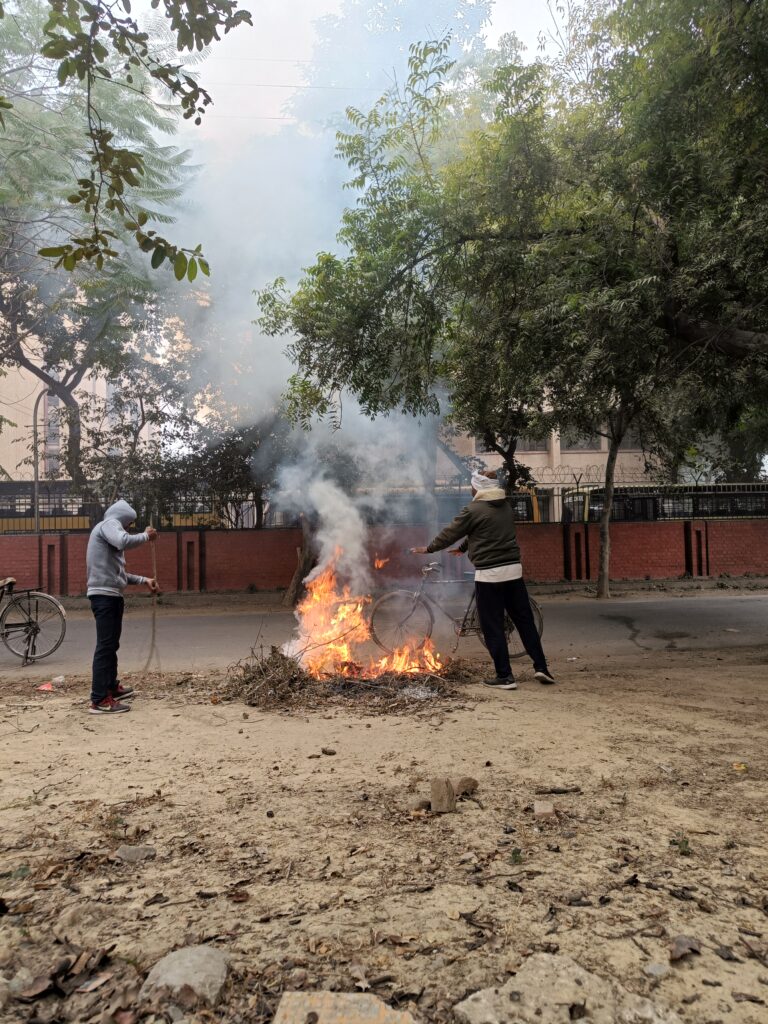*CHETNA SHREE

New Delhi, India – Delhi, the bustling capital of India, is shrouded in a thick veil of smog, while Delhi’s air quality index has witnessed some signs of improvisation, yet there are various health concerns related to it. As of January 12, 2024, the Air Quality Index (AQI) of Delhi falls at 317 marking the severe level of air quality according to Central Pollution Control Board (CPCB) which is dangerous for health especially for kids and old age people. During the winters, Delhi’s air quality goes to a hazardous level which is alarming. Experts have advised staying indoors and taking steps to curb air pollution.
- Current AQI: 317(Severe), but PM2.5 levels 18.6 times above WHO limit.
- Grim Outlook: Experts predict winter months to be even worse.
- Health Impacts: Respiratory issues, heart problems, and even premature deaths
Delhi is a populated state and home to millions of people. With a total of 12M of registered people, Delhi has the largest concentration of vehicles in India which release nitrogen oxide and other particulate matters which lowers the quality of air. Other than vehicles there are other reasons too like: – emissions from industries which includes sulfur dioxide and other harmful gases, cold weather and low wind speeds trap pollutants, creating a smog blanket over the city, subtle burning done by farmers to burn agricultural residue during winters in the neighboring regions of Delhi, for example Haryana, and cutting down trees to promote urbanization.
Delhi’s Aam Admi Party (AAP) government and the chief minister of Delhi Arvind Kejriwal has put up various schemes to combat air pollution. His foremost plan is the Odd Even Scheme in which there is restriction on the use of private vehicles based on their license plate numbers to reduce traffic congestion and emissions. Other approaches include promotion of EV vehicles which have zero tailpipe emissions, controlling the industrial and constructional emissions, and introduce more green sustainable approaches. Along with these, he has requested the public to use public transport like the metro and buses and avoid private vehicles. In accordance with this, he has increased the number of metros to make a pollution free state. They are promoting the use of green FUELS like CNG and biodiesel. Due to rain, the air quality has improved. So, the government is trying initiatives like artificial rain which will help to improve air quality. We can plant trees which will l absorb carbon dioxide and give us fresh oxygen. Experts have asked to wear masks, limit the outdoors activities, and use air purifiers.
Despite these efforts, air pollution remains a major challenge for Delhi. The recent increase in PM2.5 levels is 18.6 times above than WHO’s recommended limit is a cause for concern and highlights the need for continued and sustained efforts to improve air quality in the city. Experts warn that the air quality is likely to deteriorate further in the coming winter months, with PM2.5 levels potentially reaching hazardous levels. This is due to a combination of factors, including the burning of stubble, colder temperatures, and lower wind speeds. It is important to note that air quality data can vary depending on the location within Delhi. Residents are encouraged to monitor the AQI in their own neighborhoods and take precautions, such as wearing masks and avoiding outdoor activities, when air quality is poor.
*( STUDENT BA-JMC III SEM )*

